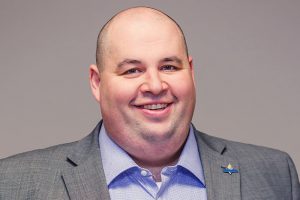By J.J Sessions –
Much has been said and written of late about an article by Neal Gabler that appears in The Atlantic Magazine entitled The Secret Shame of Middle-Class Americans. The article addresses the Federal Reserve Board’s study monitoring the financial and economic status of American consumers. What has captured the most attention specifically is the fact that 47% of the study’s respondents said they couldn’t come up with $400 for an emergency from their own savings.
When asked by the Fed how they would pay for the unexpected expense, almost half of respondents admitted they would have to rely on credit cards or selling a possession to do so. This revealing data follows the results of a survey from the National Endowment for Financial Education stating that 45% of US adults are living paycheck to paycheck. As the author stated, “who knew?”
At the heart of these problems is one issue—cash flow management. Did you notice how I didn’t say budget here? People hate the word budget almost as much as a root canal.
The source of these problems is the inability for most people to sit down, calculate what they HAVE to spend, what they HAVE to save, how much remains for discretionary spending—and then not spend more than that amount.
Interestingly enough, this is not just a poor and middle class problem. High-income earners also fall into that trap albeit at a slightly lower rate than others do. A recent survey from Harris Polls and SunTrust estimates that 25% of households earning in excess of $100,000 live paycheck-to-paycheck.
The first thing I typically see or hear when clients are trying to get a handle on their expenses is an inclination to go out and buy the software that is going to fix it. The problem with most traditional budgeting software is that it is a historical, backwards look at past spending. Sure, you can set a budget for every category, but how do you keep track of everything in the midst of so many transactions?
For instance, let us say that you set a monthly budget of $250 for entertainment. Unless you are consistently going back to the software to update it every few days, you won’t know where you sit with that budget and you will probably blow through it. When you know you’ve overspent, then you have to go back and categorize the expense.
Consider the fact that you will also suffer from a guilt trip over that dinner for which you knew you really didn’t have the money. Under such circumstances, your motivation to keep that budgeting software up-to-date is likely to diminish significantly.
A recent conversation with young clients about this issue led to discoveries by both spouses about just how much they were spending on dining out. Their initial estimate was $300 each month spent in restaurants and carry out. We reviewed a couple of typical months and discovered the real number was closer to $700!
When they realized how much they were spending after we had just had a conversation about their spending priorities and short-term goals, the possibilities opened up for them recognizing that there was the potential to save more each month. After accounting for the difference it would cost to replace those meals with home-cooked options, they “found” another $325 to put towards one of their “someday, maybe” goals. Their initial apprehension coming into the conversation was replaced with excitement and energy for working towards the goals.
What is my recommendation? Alleviate all of your guilt and angst by taking the following steps:
1) Identify your fixed monthly expenses.
2) Automate these expenses. Set them up for automatic payment so you don’t even have to worry about when to make them.
3) Identify future expenses by annualizing them and dividing by 12.
4) Establish automated monthly savings for those expenses.
5) Divide the balance by 4.3 (there aren’t exactly four weeks in every month, after all) and that is your weekly spending money.
6) “Balance your checkbook” by spending ten minutes making sure your fixed accounts were paid correctly and your savings accounts were paid into their respective accounts. As long as you didn’t spend more than your allotted weekly amount, you are now living within your means.
By setting money aside regularly, you will begin to break the cycle of living paycheck-to-paycheck and accrue money in your savings accounts that you can use for those future expenses. Should an emergency arise, your savings will have money you can use to pay for unexpected expenses rather than borrowing and adding to your debt. Granted, you may have to wait a little longer for that vacation you’ve been dreaming of, but you’ll be surprised how content you will be knowing you have the savings to handle an emergency and the wherewithal to take control of your financial life.
J.J Sessions, CFP®, is a Partner/Sr. Financial Planner in the Twin Cities office of The Planning Center, a fee-only financial planning and wealth management firm. Email him at jj@theplanningcenter.com.








